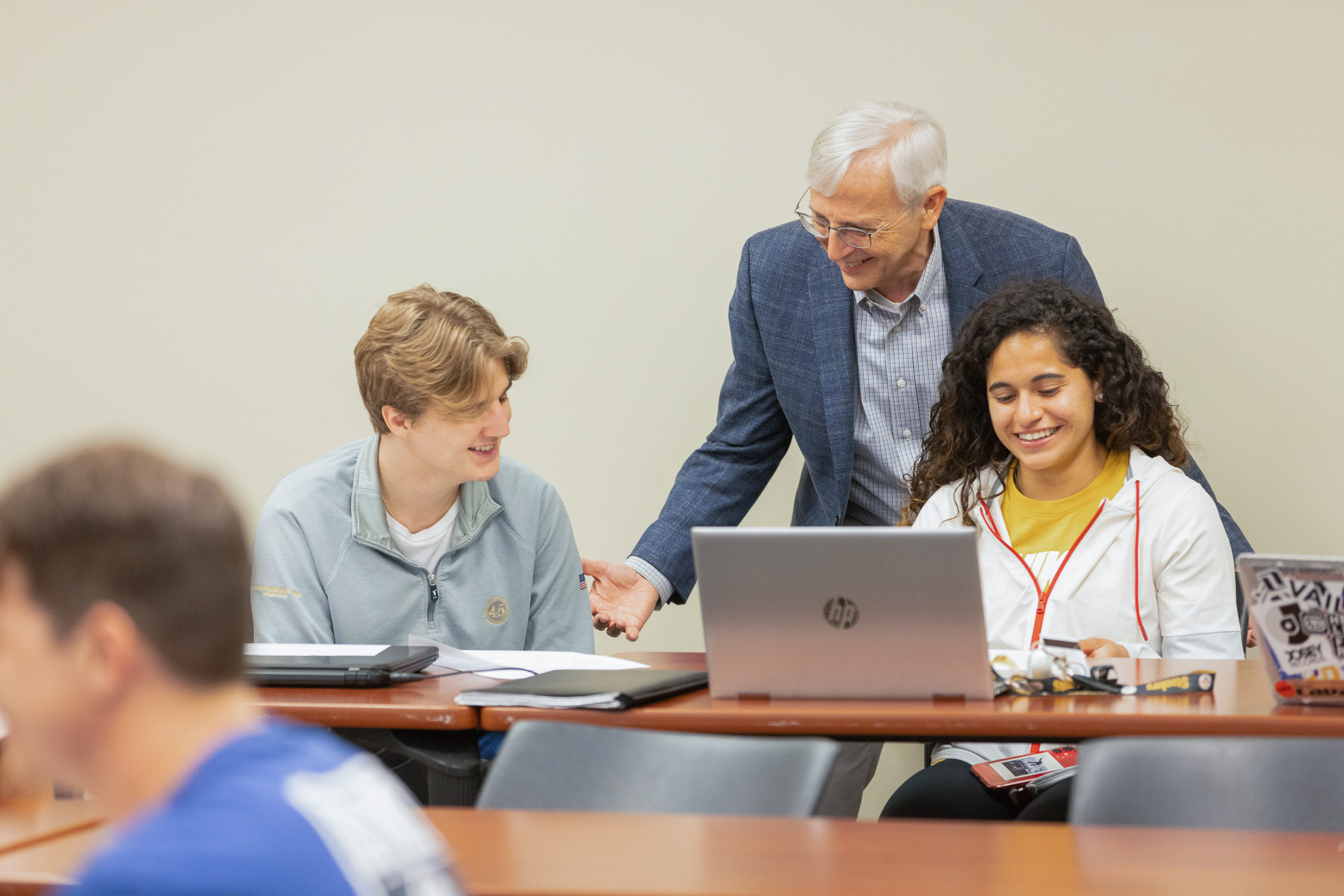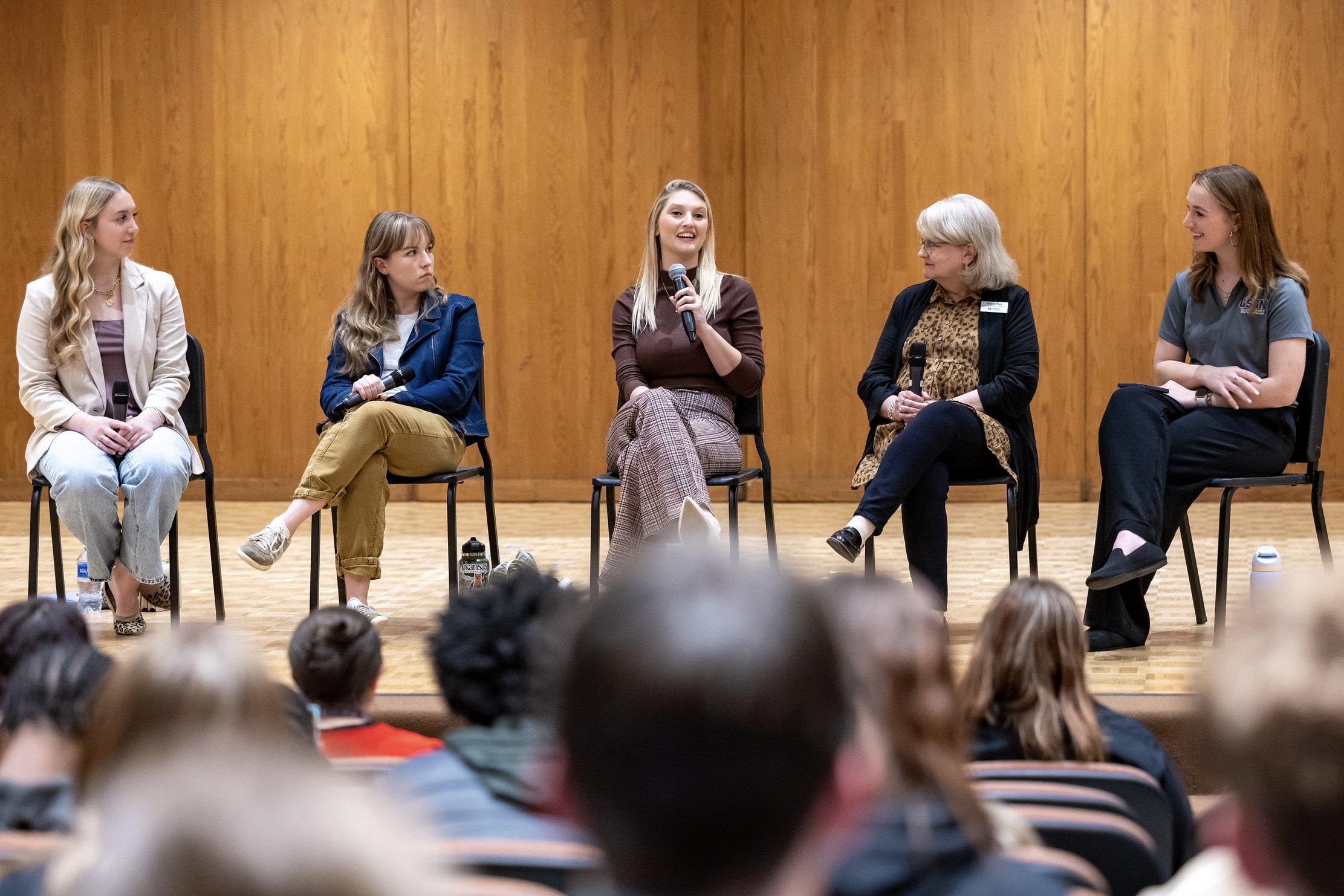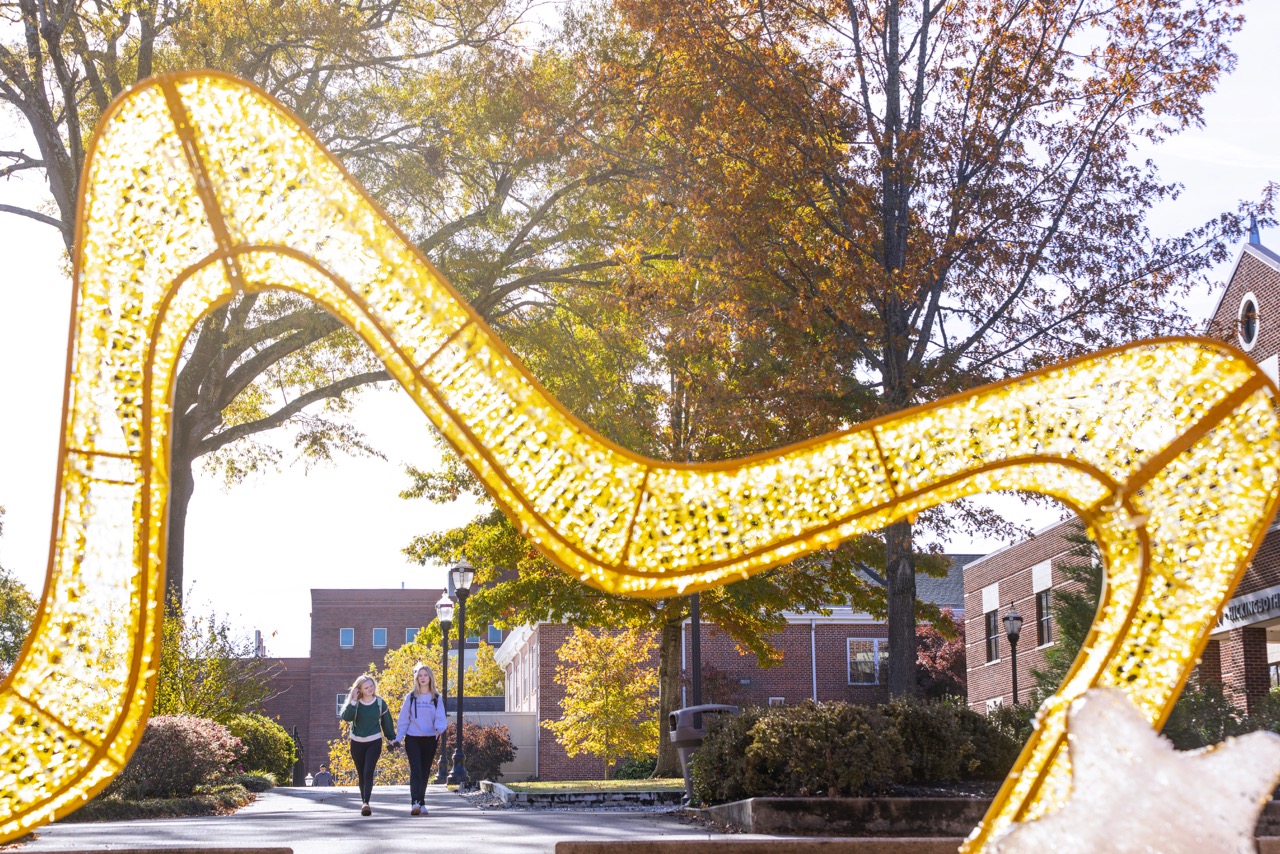Ouachita students & faculty present at American Chemical Society national meeting
April 25, 2013 - Ryleigh Salmon
Eleven Ouachita Baptist University students and two faculty members recently presented their independent summer research projects at the American Chemical Society (ACS) national meeting held earlier this month in New Orleans, La. Three of those students, Ryan James, Hollyn McCarty and Kelsey Willis earned the Chemistry Ambassador “Speak Simply” award during the Undergraduate Research Poster Session.
“It is always exciting to see Ouachita students recognized for their hard work and
intellectual contributions they make,” said Dr. Marty Perry, Nell I. Mondy Professor
of Chemistry and Ouachita’s ACS student chapter sponsor. “Ryan, Hollyn and Kelsey
all excelled and were three of the 15 students who were recognized as ‘Speak Simply’
awardees. No other institution had as many winners as Ouachita.
“The ‘Speak Simply’ competition was new at the ACS national meeting this year,” Perry
added. “Our students attended a session on oral communication skills the day prior
to their research. One of the speakers challenged them to talk about why their research is important and not only about the how they did the work.”
The students who presented in the “Speak Simply” division were judged on their ability
to talk about their research to a non-scientist and were asked to avoid scientific
jargon while explaining their research simply but compellingly.
“It was extremely challenging attempting to prevent the use of chemistry jargon,”
said McCarty, a senior chemistry and biology double major from Texarkana, Ark. “We
are all so used to speaking with other chemistry and biology majors on a daily basis,
so it’s integrated into our daily speech patterns. Shutting that off is equivalent
to the difficulty it takes to prevent the use of the ‘um’ word filler.”
“It really was a good way to look at presenting research because the majority of people
you come into contact with have no clue what you did, much less the significance of
it,” added James, a senior biology major from Benton, Ark. “It helped me realize how
important simplicity is.”
“Ouachita science students commit many hours to studying for courses, conducting lab
investigations and completing their research projects,” Perry said. “Their scientific
and communication skills are well honed—a tribute to their individual talents and
all the Ouachita faculty who mentor and instruct them.”
McCarty’s poster was titled “Computational Analysis of PPARy Similar Proteins.” She
is continuing her extensive summer research and working with a drug known as ajulemic
acid, a derivative of THC, which is a chemical commonly found in marijuana. “We are
using it to kill Ewing’s sarcoma cell lines,” McCarty said. “Ewing’s Sarcoma is a
form of pediatric bone cancer with an extremely low survival rate, and while we know
that ajulemic acid kills the cells, we do not know how it does so. Before use on human
patients, especially in pediatric cancer patients, is permitted, we have to know absolutely
everything about the drug. It was my job to find out how the drug worked to encourage
death of the tumor cells.”
James also worked with ajulemic acid and his poster was titled “Effects of Ajulemic
Acid on VEGF Production: Relevance to Angiogenic Potential in Ewing’s Sarcoma.” “The
three main areas you study when doing cancer research are cell viability (does our
drug kill the cancer cells?), metastatic potential (the ability to spread) and angiogenic
potential (the ability to form new blood vessels that will supply the tumor),” James
explained. “Specifically my poster shows the research done trying to figure out how our drug is inhibiting angiogenesis. We know that it does, but we need to prove through
what mechanism.”
Both McCarty and James have been working with Dr. Lori Hensley, associate professor
of biology and holder of the J.D. Patterson Chair of Biology, on her continuing research
regarding ajulemic acid’s effect on Ewing’s Sarcoma. McCarty also conducts research
with Perry.
Willis, a junior chemistry and biology double major from Redfield, Ark., presented
her poster titled “Analysis of Vitamin D Using HPLC.” Willis worked with Dr. Joe Bradshaw,
the W.D. and Alice Burch Professor of Chemistry and Pre-Medical Studies, to study
vitamin D2 and D3, two forms of vitamin D found in the human body.
“I was working on separating these two forms and accurately measuring the respective
amounts in various samples,” Willis said. “In order to do this, I used a High Performance
Liquid Chromatography (HPLC) instrument, which basically uses high pressures to push
samples through a small tube to separate them into the various components. In order
to get accurate results, I worked on creating a simple method to prepare the samples
and on setting the specific parameters for the HPLC instrument.”
McCarty and Willis also presented the OBU ACS chapter poster entitled “Chemistry,
Community, Connections: Activities of the Ouachita Baptist University ACS Student
Chapter,” in addition to their research posters. “This poster allowed other universities
around the country to see the activities in which our ACS student chapter is involved,”
McCarty said.
At the meeting, students and faculty attended lectures and presentations of other
scientists and met ACS officers from other Arkansas chapters. “I also got to meet
Dr. Carmen Collazo,” Willis said. “She is helping organize the fall 2013 ACS conference
in Indianapolis and she invited me and a few other representatives from our chapter
to sit on a panel for one of the lectures during the conference. This is a very big
honor, and I am excited to get another opportunity to attend an ACS conference.”
Perry, Bradshaw and Dr. Sara Hubbard, assistant professor of chemistry, accompanied
the students to the conference. Perry represented the Central Arkansas Section as
Councilor at the ACS governance meeting, while Bradshaw and Hubbard presented “Modified
Porphyrins for Photodynamic Theory” and “Project-Based Experiments in the Quantitative
Analysis Lab: Determination of the Calcium Content in an ‘Artifact,’” respectively.
In addition to James, McCarty and Willis, students who presented research posters
at the conference were Elizabeth Blankenship, a senior biology major from Casscoe,
Ark.; Shelby Cobb, a senior chemistry major from Pine Bluff, Ark.; Cara Cox, a junior
biology major from Bentonville, Ark.; Tim Horton, a junior physics and professional
chemistry double major from Arkadelphia, Ark.; Valerie Nickel, a senior chemistry
and biology double major from Richardson, Texas; Taylor Neeley, a junior biology major
from Camden, Ark.; Crista Riggs, a junior chemistry and biology double major from
Edmond, Okla.; and Taylor Stanford, a senior chemistry major from White Hall, Ark.
For more information, contact Dr. Marty Perry at [email protected] or (870) 245-5217.
By Ryleigh Salmon
You Also Might Like
Over 400 students and educators attend high school sports media conference at Ouachita
December 03, 2025Recent
Over 400 students and educators attend high school sports media conference at Ouachita
December 03, 2025



